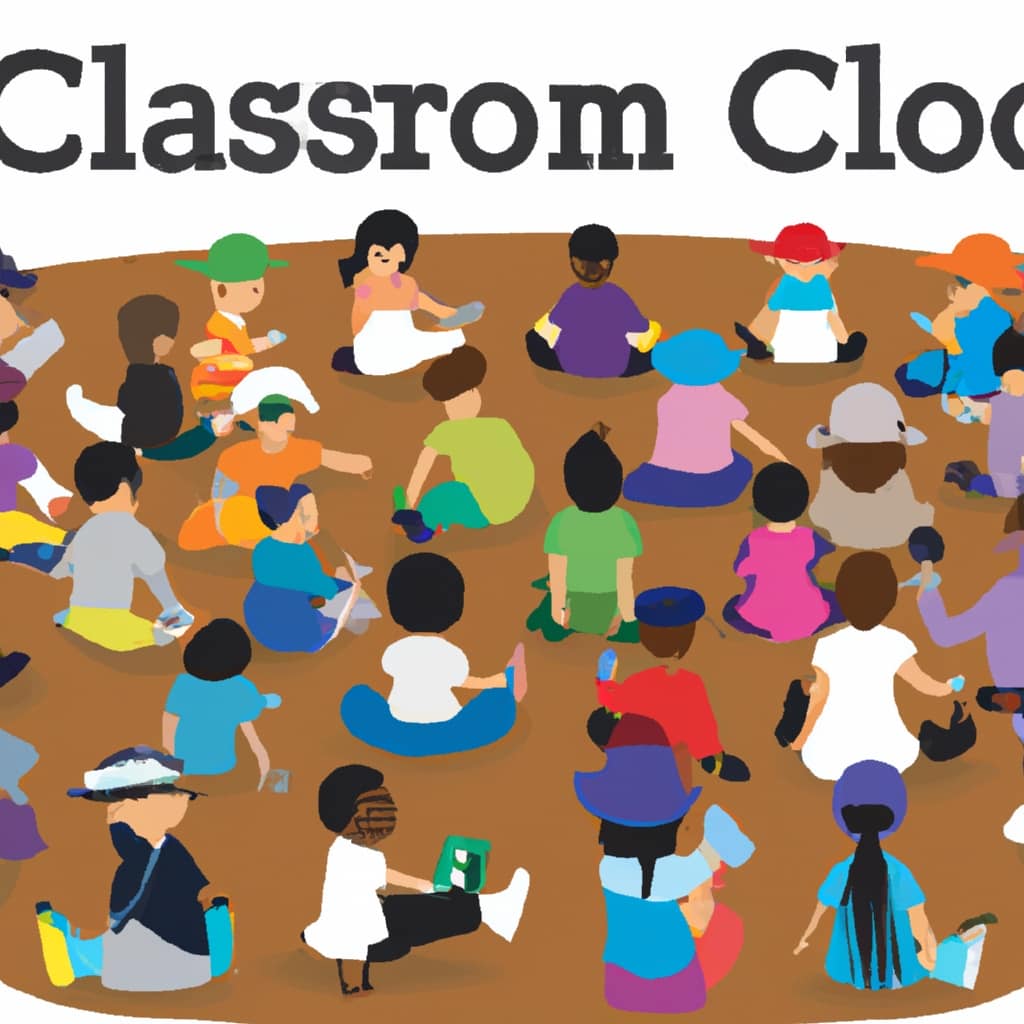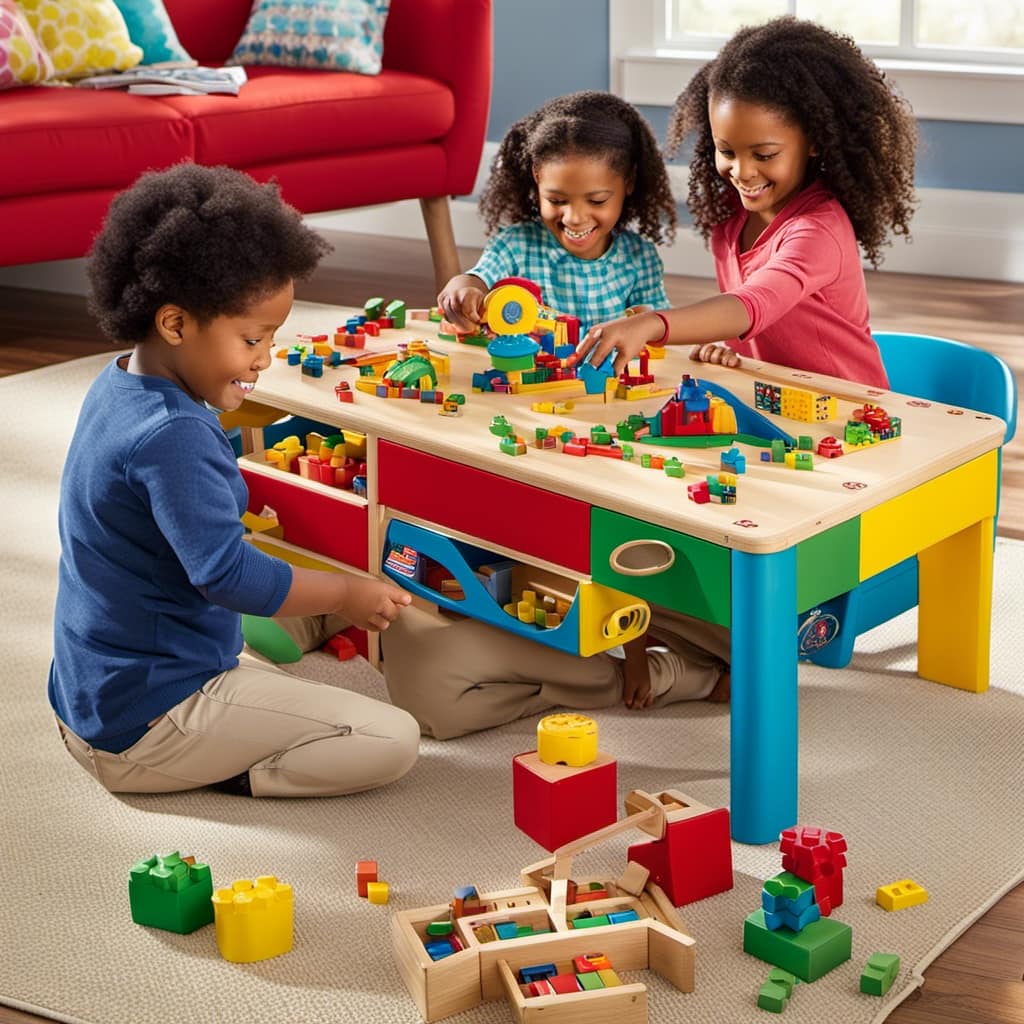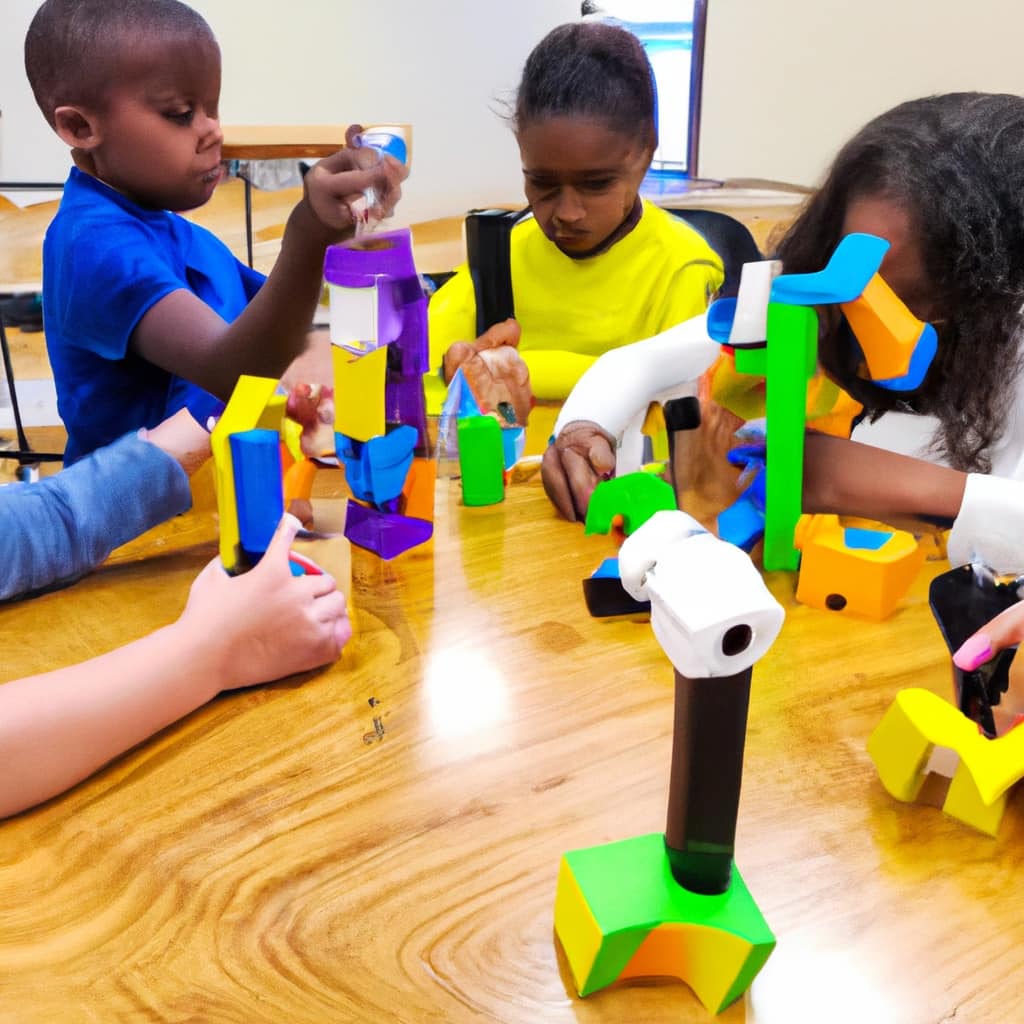As a parent, I am always on the lookout for toys that can entertain my child while also providing educational benefits. That’s why I was thrilled to discover the world of STEM toys.
Did you know that STEM toys have been shown to increase children’s interest in science, technology, engineering, and mathematics? These hands-on toys, like coding and robotics kits, engineering building blocks, and science experiment kits, provide a fun and interactive way for kids to explore these fields.
In this article, we’ll dive into the exciting world of STEM toys and explore the wide range of options available.
Key Takeaways
- STEM toys like coding and robotics kits, engineering building blocks, science experiment kits, electronic circuit kits, math puzzle games, astronomy telescopes, chemistry lab sets, physics experiment kits, and 3D printing pens provide hands-on learning experiences and promote critical thinking, problem-solving, creativity, and curiosity.
- Coding and robotics kits like LEGO Boost Creative Toolbox and Wonder Workshop Dash Robot increase interest in science and technology, develop problem-solving and logical thinking skills, and prepare children for coding competitions and real-world application.
- Engineering building blocks develop critical thinking, spatial awareness, and creativity, allowing children to create and construct stable structures, experiment with different designs, and learn from mistakes.
- Science experiment kits like Science Wiz Chemistry Plus Experiment Kit and Thames & Kosmos Crystal Growing Kit engage in scientific exploration, develop critical thinking and problem-solving skills, and have practical applications for science fair projects.
Coding and Robotics Kits
I love how coding and robotics kits like LEGO Boost Creative Toolbox and Wonder Workshop Dash Robot make learning science and technology fun and engaging. These kits not only introduce coding in a fun and interactive way, but also provide coding challenges and activities that develop problem-solving and logical thinking skills.
They offer step-by-step instructions and easy-to-use coding interfaces, making it accessible for beginners. Additionally, these kits often include coding competitions, which not only motivate children but also provide real-world application for their coding skills.
With interactive elements like sensors and lights, children can see immediate results and learn about the practical applications of coding. These kits also introduce programming languages, allowing children to learn different coding languages and expand their coding abilities.

Engineering Building Blocks
Experimenting with engineering building blocks allows me to develop critical thinking, spatial awareness, and creativity.
The benefits of using engineering building blocks in early childhood education are immense. These blocks provide children with the opportunity to explore and understand how different pieces fit together to create stable structures. By experimenting with different designs and learning from mistakes, children develop problem-solving skills and critical thinking abilities.
Additionally, engineering building blocks offer a fun and entertaining play experience that engages children’s imagination and creativity. Through building and constructing with these blocks, children enhance their spatial awareness as they learn to visualize and manipulate three-dimensional objects.
Overall, incorporating engineering building blocks into early childhood education can greatly enhance children’s spatial awareness and creativity while fostering important cognitive skills.
Science Experiment Kits
Engaging with science experiment kits fosters critical thinking, problem-solving, and creativity while exploring the wonders of the natural world. Hands-on learning in science experiments offers numerous benefits for children of all ages.
Popular science experiment kits cater to different age groups, providing age-appropriate activities and challenges. For younger children, kits like the Science Wiz Chemistry Plus Experiment Kit introduce basic scientific concepts through fun and interactive experiments.

Older children can explore more advanced topics with kits like the Thames & Kosmos Crystal Growing Kit, which allows them to grow their own crystals and learn about their formation. These kits not only develop critical thinking and problem-solving skills, but also provide practical applications for science fair projects.
Electronic Circuit Kits
Electronic circuit kits provide hands-on learning experiences in electronics and programming. This allows me to develop problem-solving, critical thinking, creativity, and curiosity.
These kits, such as Snap Circuits, littleBits, and Makey Makey, offer a wide range of activities and projects. They engage and challenge learners of all levels. With no prior knowledge of electronics required, these kits provide an accessible way to explore the world of circuits.
Through hands-on experimentation, I can learn about circuitry, components, and how they all work together to create various electronic devices. This hands-on approach not only enhances my understanding of electronics but also fosters my creativity. I can design and build my own circuits, which adds to the overall experience.
Creative problem-solving is at the core of working with circuits. I learn to troubleshoot and find solutions when things don’t work as expected. This aspect of circuit kits enhances my problem-solving skills and encourages me to think outside the box.
Overall, electronic circuit kits provide a stimulating and engaging way to learn about electronics and develop valuable skills in problem-solving and creative thinking.

Math Puzzle Games
Playing math puzzle games has greatly improved my problem-solving and logical thinking skills. These games not only make learning math fun and engaging but also offer numerous benefits for children’s cognitive development. Math puzzle games help children develop critical thinking skills as they analyze and solve complex problems. They also enhance their problem-solving abilities by encouraging them to think creatively and find different approaches to mathematical challenges. Additionally, these games promote the development of logical thinking skills as children learn to recognize patterns, make connections, and apply logical reasoning to solve math puzzles. Math puzzle games can also be effectively used in the classroom to enhance learning. Teachers can incorporate these games into their lessons to reinforce mathematical concepts, provide hands-on problem-solving experiences, and promote active engagement in the subject. By incorporating math puzzle games into their teaching, educators can create a stimulating and interactive learning environment that fosters students’ mathematical skills and confidence.
| Benefits of Math Puzzle Games | How Math Puzzle Games Enhance Classroom Learning |
|---|---|
| Develop problem-solving skills | Reinforce mathematical concepts |
| Enhance logical thinking skills | Provide hands-on problem-solving experiences |
| Foster creative thinking | Promote active engagement in the subject |
| Develop pattern recognition abilities | Stimulate and interactive learning environment |
Astronomy Telescopes
Observing celestial objects through astronomy telescopes has sparked my curiosity and deepened my interest in space and astronomy. The world beyond our planet is vast and mysterious, and telescopes allow us to catch a glimpse of its wonders.
When choosing the right telescope for beginners, there are a few factors to consider.
-
Portable vs Stationary Telescopes: Portable telescopes are lightweight and easy to transport, making them ideal for stargazing on the go. Stationary telescopes, on the other hand, offer stability and larger apertures for better image quality.
-
Aperture Size: The aperture size determines how much light the telescope can gather. Beginners should opt for a telescope with a larger aperture, as it allows for better views of celestial objects.
-
Budget: There are budget-friendly options available for beginners, such as the Celestron PowerSeeker and Orion StarBlast telescopes. These telescopes provide good performance without breaking the bank.

Frequently Asked Questions
Are STEM Toys Only Suitable for Boys?
STEM toys are not only suitable for boys. They break gender stereotypes and promote inclusivity and diversity in STEM education. Introducing girls to STEM toys inspires a new generation of female scientists, engineers, and innovators.
What Age Range Are STEM Toys Designed For?
STEM toys are designed for a wide age range, from early childhood to adolescence. Incorporating STEM toys in early childhood education offers numerous benefits, such as enhancing critical thinking skills and promoting hands-on learning experiences.
Do STEM Toys Require Any Prior Knowledge or Experience?
STEM toys do not require any prior knowledge or experience. They are designed to introduce concepts in a beginner-friendly way. Step-by-step instructions and easy-to-use interfaces make it accessible for children of all levels to learn and engage with STEM subjects.
Can STEM Toys Be Used for Educational Purposes?
STEM toys can be incredibly beneficial for educational purposes. They offer numerous benefits, including promoting critical thinking skills and fostering creativity. Incorporating STEM toys into the classroom can enhance learning and engage students in a hands-on, interactive way.
Are There Any Safety Considerations When Using STEM Toys?
When using STEM toys, it is important to take safety precautions and provide parental supervision. This ensures that children can safely engage in hands-on learning and exploration with these educational toys.
Conclusion
In conclusion, STEM toys offer countless benefits for children’s educational and cognitive development. These toys provide interactive and engaging activities that foster critical thinking, problem-solving, creativity, and curiosity skills. From coding and robotics kits to science experiment kits and astronomy telescopes, there is a wide range of options available.

While some may argue that STEM toys are only suitable for certain children or genders, it is important to remember that these toys are designed to be gender-neutral. They aim to encourage the participation of all children in STEM fields. By breaking gender stereotypes and promoting inclusivity and diversity, STEM toys inspire the next generation of scientists, engineers, and innovators. These toys are accessible to children regardless of their background or gender.










